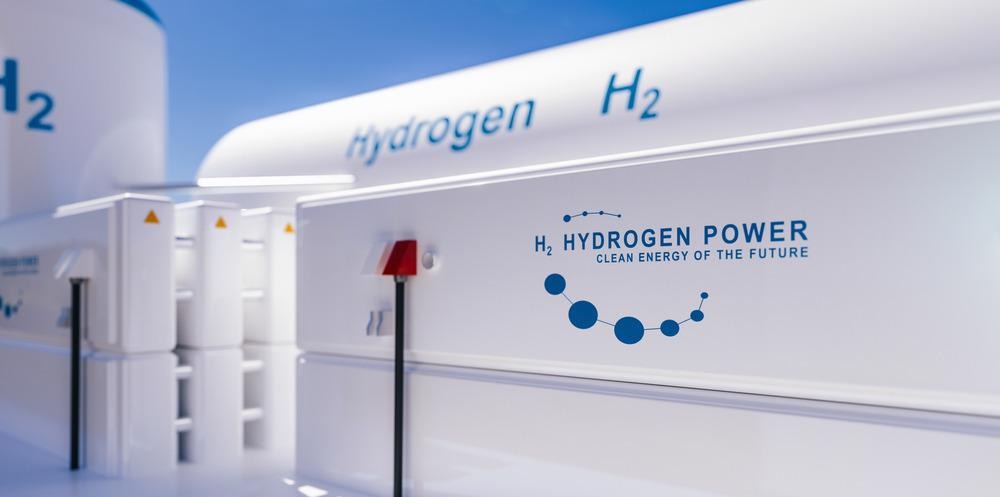In the present world energy transformation paradigm, hydrogen is making inroads. As seen by current global political and economic plans, which support carbon neutrality by 2030 and a rapid transition to clean energy, there is rising and broad anticipation for hydrogen production, as stated in the journal Energy Conversion and Management.

Study: Perspective of the role of hydrogen in the 21st century energy transition. Energy Conversion and Management. Image Credit: Audio und werbung/Shutterstock.com
Green hydrogen has the capacity to bring a positive cycle for future renewable-based energy grids, since it may supply power systems with much-needed adaptability while acting as a buffer for non-dispatchable renewable output. Indeed, surplus energy from both renewable and conventional power plants may be stored in the form of hydrogen.
Hydrogen Attractiveness
Hydrogen is undergoing an exceptional significant shift in terms of its future significant position in the global energy situation. Hydrogen's attractiveness stems from the fact that it is a carbon-free fuel. This implies that when hydrogen is consumed to generate heat, electricity, or both, there are still no carbon dioxide emissions. Researchers and professionals are becoming more interested in hydrogen as a means of accelerating decarbonization.
Hydrogen might be used to replace traditional fossil fuels and cut carbon emissions, particularly in hard-to-reduce industries (e.g., cement farms, iron, and steel production). Furthermore, hydrogen provides a solution to the temporal storage problem associated with the renewable energy supply, which peaks in the summer while consumption peaks in the winter.
Despite its technological potential, hydrogen is currently prohibitively costly. The rapidly lowering cost of power generated from renewables, as well as significant expenditures by countries, has sparked interest in finding new ways to produce low-cost, low-carbon hydrogen.
Hydrogen Generation
Because for now 96 percent of all hydrogen is generated from fossil energy (either brown hydrogen by coal combustion as well as grey hydrogen from biogas) and the remaining from electrolysis, low-carbon hydrogen manufacturing, particularly green hydrogen generation from renewable sources, is critical to meeting these targets. Indeed, Steam Methane Reforming or SMR is presently responsible for a major portion of hydrogen production.
Despite the fact that this technology is widely used, new research has revealed novelties that aim to improve the efficiency of the process. Green hydrogen generation has the potential to generate a virtuous cycle for renewable-based power networks, as hydrogen may give much-needed flexibility to renewable-based energy grids.
The capacity to create a considerable amount of clean hydrogen, often known as green hydrogen, is the first and most important step in achieving this goal. Although hydrogen is not a major energy source, it may be created by a variety of methods, each of which is distinguished by a different color.
Green hydrogen is generated from renewable power through electrolysis; brown hydrogen is generated from coal combustion with vapour; gray hydrogen can be produced out of standard fossil fuels such as natural gas, and hydrogen produced from methane with a method of carbon capture and sequestration of methane is considered methane hydrogen (CCS - Carbon Capture and Storage) called blue hydrogen.
Alkaline Electrolysis and Biomass
Although alkaline electrolysis is by far the most developed and frequently marketed method, it has a number of disadvantages over other technologies, including lower gas purity, lower working pressures, and greater energy usage.
Considering the Potential of Hydrogen-Powered Trains
Extra hydrogen compressing is necessary for downstream applications due to low operating pressures. Researchers and scientists are working on many elements of the performance to enhance it. In comparison to alkaline procedures, polymer exchange membranes (PEM) systems allow for greater operating pressures.
In addition, their key feature is its adaptability to a wide range of working circumstances. This makes it easier to connect these systems to renewable energy sources.
The Prenzlau facility (Germany), which was launched in 2011, is an application of electrolysis technology paired with a wind energy-producing plant. Three wind turbines (each 2.3 MW) are immediately linked to a 600 kW alkaline-based electrolyzer capable of generating 120 Nm3/h of hydrogen.
The Linz electrolysis plant is yet another case of an advanced manufacturing electrolysis facility (Austria). The facility, which was funded by the European Union under the H2Future project, was built to research the electrolyzer's network balancing capability and to power it completely with renewable energy sources.
Furthermore, this facility was developed near a steel industry with the goal of lowering steel production's reliance on fossil fuels. The plant has a capacity of 6 MW and generates 1200 Nm3/h of Hydrogen
The gasification method may also be used to create hydrogen from biomass resources. Indeed, biomass gasification is a process that uses oxygen and/or steam to efficiently convert biomass into syngas at temperatures above 700 degrees Celsius.
Hydrogen generation from biomass gasification might be carbon negative if paired with Carbon Capture and Storage technology. By 2050, it is estimated that the application of this technology could result in a reduction of around 45 million tons of CO2.
Reference
Capurrso, T., et al. (2021). Perspective of the role of hydrogen in the 21st century energy transition. Energy Conversion and Management. https://www.sciencedirect.com/science/article/pii/S0196890421010748?via%3Dihub
Disclaimer: The views expressed here are those of the author expressed in their private capacity and do not necessarily represent the views of AZoM.com Limited T/A AZoNetwork the owner and operator of this website. This disclaimer forms part of the Terms and conditions of use of this website.